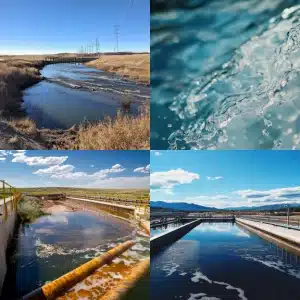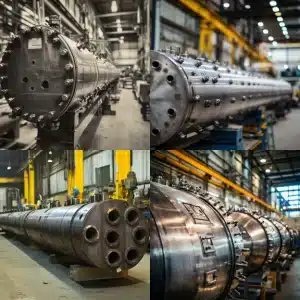
Structural failure analysis is crucial for identifying weak points in materials, designs, or processes early, reducing safety risks, downtime, and costs. It supports quality and compliance in prefabrication and pressure vessel manufacturing, ensuring stronger, safer products that meet industry standards.
Understanding Why is Structural Failure Analysis Important
Structural failures can cause costly downtime, safety risks, and unreliable products in manufacturing, construction, or pressure vessel design. Why is structural failure analysis important? It helps identify weak points in materials, designs, or processes long before accidents occur. With the right methods, this process is simpler than it sounds. With the right methods, this process is simpler than it sounds.
This analysis reduces risk and improves quality across prefabrication, custom pressure vessel manufacturing, and overall operations. By combining data, examples, and practical advice, it guides you toward safer, more reliable outcomes.
Why is Structural Failure Analysis Important
Structural failure analysis systematically examines where and how a component might fail under stress or use. It reviews material properties, design, and loading conditions, real or simulated to identify weak points. This process helps answer key questions about material durability, weld quality, and hidden stress areas to ensure safety and compliance.
Preventing Catastrophic Failures
Structural breakdowns in pressure vessels, modular skids, or prefabricated structures can endanger teams, harm the environment, and lead to hefty fines. A thorough failure analysis (including stress simulations and inspection data) allows you to redesign or strengthen at-risk areas in advance.
Ensuring Regulatory Compliance
Many industries demand strict adherence to codes such as ASME standards for pressure vessels. By analyzing potential structural failures, you stay on track with regulations, often surpassing the basic safety requirements. (Red River LLC Team)
Reducing Downtime and Costs
A collapsed structure or a leaking vessel can force you to shut down entire operations. Failure analysis identifies likely problems, letting you fix them early and avoid expensive repairs or total rebuilds.
Building Long-term Trust
If your clients know you have taken the time (and budget) to test and verify the structural stability of your product, they are more inclined to rely on you for future projects.
From robust prefabricated modules to highly specialized pressure vessels, structural failure analysis supports every stage, from design to final inspection. It is truly a smart safety net that brings positive ripple effects across your entire operation.
Looking at Common Structural Risks and Failures
To appreciate structural failure analysis, it helps to recognize where faults often begin:
- Material defects: Even quality metals or alloys can contain hidden flaws (like microcracks or inclusions) from the manufacturing process. Over time, repeated load cycles can exploit these tiny defects, resulting in failure.
- Stress concentrations: Sharp corners, abrupt thickness variations, or poorly welded joints concentrate stress in localized areas. Under repeated loading, these zones often become the first to fracture.
- Corrosion damage: When metal surfaces deteriorate from chemical reactions or exposure to the elements, structural strength drops. Regular checks for corrosion, combined with protective coatings, can prevent early failures.
- Insufficient testing: Without rigorous design checks or simulations, engineers may miss issues like overstressed regions or vibrations at certain load levels. The more complex the system, the greater the chance of overlooking such details.
- Flawed maintenance routines: Even a well-built structure demands periodic reviews to catch minor cracks or misalignments. If these checks are skipped, small problems accumulate into major system breakdowns.
By examining pressure vessel leaks and collapses, engineers identify causes like metal fatigue and corrosion. This insight helps them improve designs and address vulnerabilities early, preventing failures that could disrupt schedules or endanger teams.
How Structural Failure Analysis Drives Prefabrication Success
Prefabrication involves off-site assembly of modules before installation, saving labor costs, Prefabrication, which involves off-site assembly of modules, saves labor, shortens schedules, and improves quality control, especially in controlled environments. Structural failure analysis is vital to ensure every component meets standards by enabling:
- Material traceability to quickly address any concerns with alloys or parts
- Rigorous testing like load and hydrostatic pressure assessments to find weak points early
- Comprehensive weld inspections to detect and fix flaws before site delivery
- Ongoing design improvements based on failure trends for better strength and durability
Together, these practices reduce safety risks, minimize rework, and lead to smoother projects with more satisfied clients.
Ensuring Safety and Compliance in Pressure Vessel Manufacturing
Pressure vessels, designed to hold pressurized gases or liquids, require thorough structural failure analysis to prevent dangerous leaks or ruptures. According to Red River LLC, an ASME-certified manufacturer, key safety and compliance steps include:
- Design validation using specialized software to identify stress points and optimize reinforcement
- Rigorous inspections of welds, flanges, and nozzles with non-destructive testing like X-rays and ultrasonic scans
- Leak prevention by analyzing critical seals such as gaskets and bolts to withstand pressure spikes
- Continuous improvement based on past data and failure studies to enhance future designs
These practices ensure reliability, reduce accidents, avoid regulatory penalties, and build user trust across industries like water treatment and oil and gas.
Key Design Factors in Structural Failure Analysis
Structural failure analysis is not only about finding cracks or corrosion. It is equally about designing components and assemblies with reliability in mind. Below are some of the chief design factors you should incorporate:
Material Selection
Choose alloys that suit your temperature and pressure requirements. Some metals excel at withstanding high heat, while others resist corrosive chemicals. Solid analysis avoids overengineering (and the extra cost) but ensures enough safety margin.
Weld and Joint Design
Joints are common hotspots for structural failures. Good welding practices, aligned edges, and thorough post-weld inspections are essential. If you are not sure how to methodically evaluate these joints, a deeper dive into how to perform structural failure analysis can help.
Load Calculations
Determine all loads (static, dynamic, and thermal) at play. For instance, cyclical loads cause fatigue, especially in vessels that go through repeated pressure cycles. Factor in shock loads if you anticipate abrupt pressure spikes or vibrations.
Inspection Protocols
Beyond initial proof testing, an ongoing inspection plan should check for any emerging deformations or signs of fatigue. These steps prevent undetected damage from escalating.
Overall Compliance
Your final design must match relevant codes like ASME or AWS (American Welding Society). Failure to comply risks legal issues and could endanger those who handle the finished product.
When all these measures blend together, you reinforce the structure’s capacity to handle operational stress. Detailed as it may seem, investing in design improvements now is far simpler (and less expensive) than dealing with the fallout of an unexpected breakdown later.
Why is Structural Failure Analysis Important for Your Next Project
Structural failure analysis may seem complex, but it transforms operations from guesswork to reliable science. Whether managing prefabrication, modular assembly, or pressure vessels, it helps identify weak points, reduce costs, and ensure compliance. Adopting this analysis early provides confidence that structures will withstand real-world demands and sets a professional, safety-focused tone for your entire organization.
Take Action with Structural Failure Analysis Today
Don’t wait for structural issues to cause costly setbacks. Partner with experts and adopt a structured failure analysis process now. It’s the step that protects your team, your assets, and your reputation.
Frequently Asked Questions
1. What is structural failure analysis?
Structural failure analysis investigates why a structure or component failed by identifying root causes like material defects, design flaws, or external stresses. It helps prevent future failures by understanding how and why the breakdown occurred.
2. How to perform structural failure analysis?
Start with a visual inspection, then use material testing, stress analysis, and fractography. Review the operational history, loading conditions, and environment to find the failure cause and suggest fixes.
3. What does a structural failure analysis involve?
It includes reviewing design specs, material quality, and loading patterns, plus testing or simulating how structures respond to stresses. The goal is to find weak points that could fail under real conditions.
4. How often should you perform structural failure analysis?
Frequency depends on the structure and risk. Some analyze only at design, while others do it regularly, especially for equipment under extreme or cyclical loads.
5. Can structural failure analysis help with older installations?
Yes, modern testing like ultrasonic scans or 3D modeling can reveal weaknesses in older structures, helping plan repairs before major failures occur.
Key Takeaways
- A robust approach: Structural failure analysis offers a reliable way to identify weak links early and supports the creation of safer, stronger systems.
- Real cost savings: By spotting likely failure sites, you avoid expensive overhauls and downtime later on.
- Prefabrication advantage: In controlled environments, it is easier to test modules, track materials, and verify welds, resulting in higher quality products.
- Pressure vessel safety: Leakage or rupture can be catastrophic. Analysis aligns design and manufacturing with strict ASME codes to protect workers and assets.
- Greater confidence: From initial design to final operation, structural failure analysis grants peace of mind that your system is ready for the demands of everyday use.




